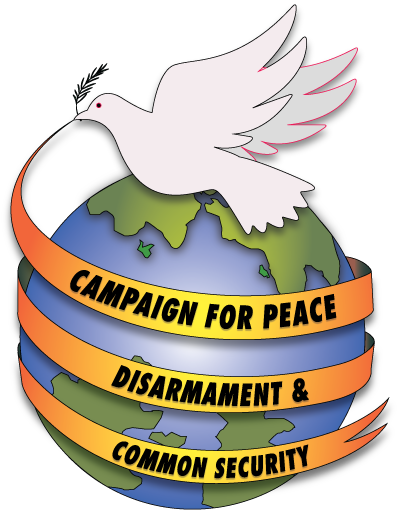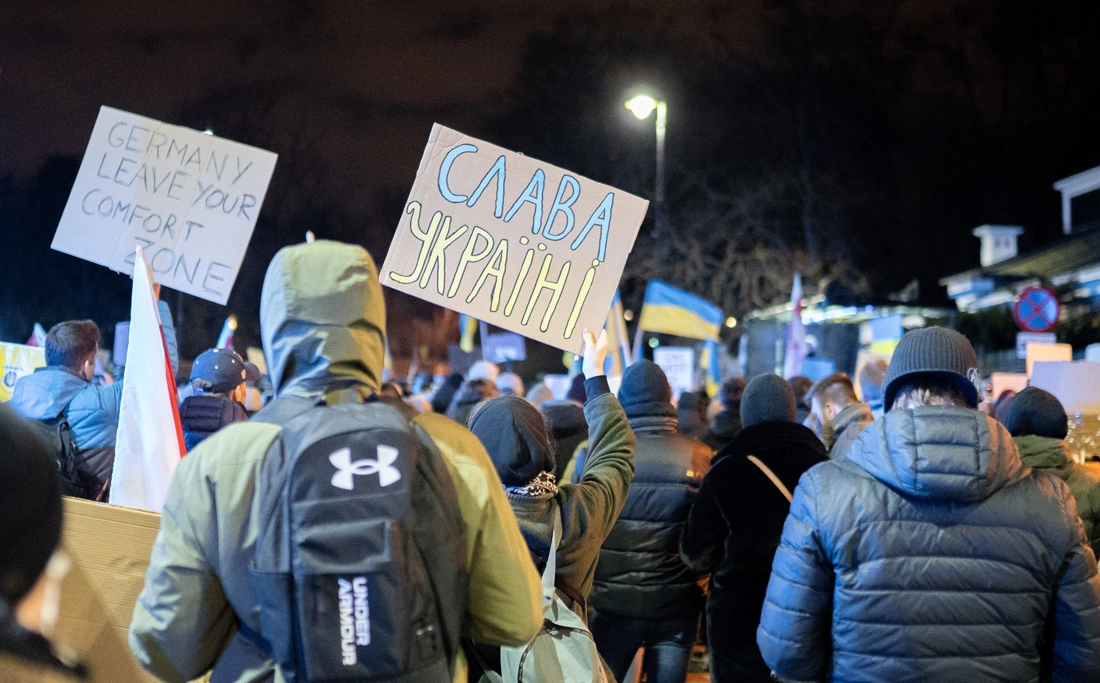Amidst the Ukraine War, the Biden Administration published its National Security. Strategy. The Strategy opens with the statement at “The post-Cold War era is definitely over, and competition is under way between the major powers to shape what comes next.” Rather than pursue win-win Common Security approaches, the Strategy calls for an integrated ali government zero-sum campaign – military, economic, technologic – to defeat Russia, contain China, and ensure U.S. 21st century hegemony.
The catastrophic Ukraine War is about far more than Ukraine. As the Biden Administration’s recently released National Security Strategy tells us, “The post-Cold War era is definitely over, and competition is underway between the major powers to shape what comes next.” The Ukraine war is a primary front in the global competition for power and privilege. Even as Russia finds itself on the defensive, the current moment disturbingly resembles the period before the First World War: competition between rising and declining imperialist powers, arms races with new technologies, complicated alliance structures, economic competition and cooperation, wild card actors, and territorial disputes.
The outstanding question is if we have the will to create the other world that we know is possible.
Putin’s invasion of Ukraine was designed 1) to counter expanding U.S./NATO influence on its borders, 2) to reinforce Russia’s historic imperial ambitions, and 3) to reinforce the foundations of Moscow’s ruling elite. All has not gone well. In addition to Putin’s setbacks in Kyiv, Kharkiv, and Kherson, he has found that his partnership with Beijing is not “unlimited.” Beijing has its own priorities: reinforcing the Communist Party’s domestic and national security, ensuring that Washington and NATO need to continue concentrating military and economic resources in Europe to reduce the intensity of the U.S. containment challenge, and to maintain access to its U.S. and European markets.
And, with its nearly unlimited military and economic support for the proxy war in Ukraine, the Biden Administration aims to reinforce and expand the U.S. dominated Bretton Woods/NATO systems against Russia’s immediate and China’s longer-term threats to the so-called “rules based” order. Unlike Trump, Biden and company understand that the U.S. cannot do this unilaterally. Hence the priority given to integrating and consolidating their allies’ military, economic and technological power with that of the U.S. to contain China.
The National Security Strategy
The Biden Administration’s new National Security Strategy is filled with patriotic pablum and contradictions. It reflects the U.S. elite’s commitments to contain and “out compete” China while “constraining Russia.” the Strategy updates and revises Obama and Trump priorities: Obama’s “pivot” to Asia and the Pacific, Trump’s protectionist trade policies, and maintenance of the nation’s “unmatched” military– including nuclear, AI, and space forces. President Biden says, “the U.S. is back.” His National Security Strategy is designed to enforce that boast.
The Biden Strategy warns that China and Russia are “increasingly aligned with each other” but it acknowledges that the challenges they pose are “distinct.” Significantly, the China threat is detailed first, described as “the only competitor with both the intent to reshape the international order and, increasingly the economic, diplomatic, military and technological power to do it.” With increased military spending, China’s military is described as ”increasingly capable in the Indo-Pacific and growing in strength and reach globally.” The Strategy continues that Beijing uses its technological capacity and diplomatic influence to advance its interest at others’ expense. And technological primacy is understood to be determinative for military and economic power.
The Strategy calls for a two-part containment strategy: massive investments to revitalize the U.S. economy and technological innovation to meet the Chinese challenge, and advocates deepening military, economic, and technological alignment with U.S. allies and partners. Biden made advances in fulfilling the Strategy’s first commitments with a $560 billion boost for the U.S. economy, reinforced by a $ 52 billion subsidy for the U.S. semiconductor and high-tech industry. And, to reinforce what have been four generations of U.S. Asia-Pacific hegemony, Biden and company have consolidated the QUAD alliance with Japan, Australia, and India. The nuclear AUKUS (Australian, UK, and US) alliance is being deepened. South Korea and Japan are being encouraged to paper over profound historic enmities to build a tripartite alliance. The new Marcos dictatorship has reembraced the U.S. military alliance. And NATO’s new strategic concept makes containing China an Alliance priority. These nations’ militaries and technological resources are being further integrated with those of the United Sates, while the Indo-Pacific Economic Framework for Prosperity was launched to serve as the economic glue.
Taiwan is the hinge and most dangerous potential flash point of this geopolitical stew. For China, Taiwan, a province severed from the mainland by Japan in 1895, is seen as strategically critical and the final prize in overcoming the 150 year era of humiliation. For the U.S. and now Japan, Taiwan is essential for bottling up China’s Navy, and it is a democratic society not to be sacrificed to Chinese authoritarianism. Beginning in the Trump era and accelerated by Biden, is the commitment to bring Taiwan fully into the U.S. sphere, violating the One China Policy that has been the foundation for Northeast Asian stability since 1979, and to which the U.S. still gives lip service. With almost daily Chinese and U.S. air and naval provocations near Taiwan, an accident or miscalculation could escalate to miliary – even nuclear – conflict.
Similarly, Japanese – Chinese competition for the uninhabited Senkaku/Diaoyu Islands in the East China Sea, and competition for control over the resources and sea lanes of the South China Sea (over which 40% of world trade including Middle East and Indonesian oil essential for East Asia’s economies transits) could trigger a catastrophic war. And not to be forgotten is the nuclear confrontation between North and South Korea. The Yoon Government in Seoul seeks the return of U.S. nuclear forces to the peninsula, and Japan is increasingly committed to acquiring non-nuclear first-strike capabilities to incapacitate Pyongyang’s nuclear arsenal. Recently renewed and expanded U.S.-South Korea wargames have unsettled Pyongyang and fueled frequent North Korean missile tests, with the tensions now a mutually reinforcing and spiraling military escalation dynamic.
U.S., NATO, Russia, and the Ukraine War
The Biden Strategy warns that “Russia now poses an immediate and persistent threat to international peace and stability.” Clearly, Vladimir Putin is principally responsible for the Ukraine War. Yet, as Anatol Lieven writes, there is sufficient moral ambiguity to go around. There were several precipitating causes for Russia’s invasion, including Putin’s commitment to restore the Russian empire and restructure domestic support for his regime. But despite Germany and France blocking Ukraine’s entry into NATO, Moscow’s elite was anxious about the strategic vulnerabilities resulting from NATO’s advance to Russia’s borders and by the deepening integration of Ukraine’s military into NATO systems. They remember Napoleon’s, the Kaiser’s, and Hitler’s devastating invasions of Russia. Not to be forgotten are the warnings sounded by George Kennan, author of the U.S. Cold War containment doctrine, that President Clinton’s initial expansion of NATO was a “tragic mistake “and Fiona Hill’s advice to W. Bush that pressing Ukrainian NATO membership could provoke Moscow.
This is the “order” that Russia arguably seeks to overturn. Two months before Putin’s invasion, he proposed a draft treaty banning Ukraine from ever joining NATO and, more, banning deployment of NATO military forces and weapons in eleven NATO member states – including the Baltics, Romania, and the Czech Republic. Putin had to know that this was a provocative non-starter, but one signaling his security and imperial ambitions.
The Biden Strategy wants its cake and to eat it , defeating Russia while creating strategic stability, with a traumatized Moscow meekly accepting the new order. The Strategy states the U.S. commitment to ensure that the Ukraine War ends with Russia’s “strategic failure.” And Biden has repeated that he seeks to weaken Russia and hopes to see Putin toppled. Toward this end, the Strategy urges a united NATO front to constrain Russia’s strategic economic sectors and counter Moscow in multilateral institutions. Yet the strategy also claims that the U.S. “retains an interest in preserving” strategic stability, pursuing arms control, and “rebuilding European security arrangements.” Given the war, with the exception of possible arms control negotiations, these seem to be tasks for future Russian and U.S. governments.
Towards Peace and Common Security
With the Ukraine war, new Cold Wars, and the U.N. General Secretary warning that humanity’s foot is on the accelerator to climate hell, the great powers and humankind are sleepwalking toward catastrophe. But, as another U.N. General Secretary, Ban-Ki Moon, once advised, governments will not alone deliver what we need for human survival. Pressure from below, from movements and civil society, is essential.
Noam Chomsky reminds us that we know the solutions to the greatest threats we face. One solution, building Congressional and U.S. military support for negotiations is building popular pressure for a ceasefire and diplomacy leading to a sovereign, secure and neutral Ukraine. It means honoring former Australian Prime Minister Kevin Rudd’s anguished appeal to establish guard rails to prevent an avoidable and catastrophic U.S.-Chinese War. It means winning commitments for renewed OSCE (Euro-Atlantic) negotiations for the creation of a 21st century Common Security European architecture. There are recent traditions to build on, including 1990s European Common Security commitments: The Paris Charter and the NATO-Russia Founding Act which enshrined the commitment that no nation would seek to increase its security at the expense of another.
Midst our efforts to win more ratifications for the Treaty on Prohibition of Nuclear Weapons, it means pressing for a U.S. no-first use nuclear doctrine to match China’s, for multi-lateral negotiations for a Northeast Asian nuclear weapons free zone, and reduction of provocative military operations around Taiwan and in the East and South China Seas.
Yoko Ono told us that “The War Is Over (If you want it). Joe Hill’s dying words were “Organize Organize.” And we have a roadmap in the Common Security 2022 Report. The outstanding question is if we have the will to create the other world that we know is possible.

